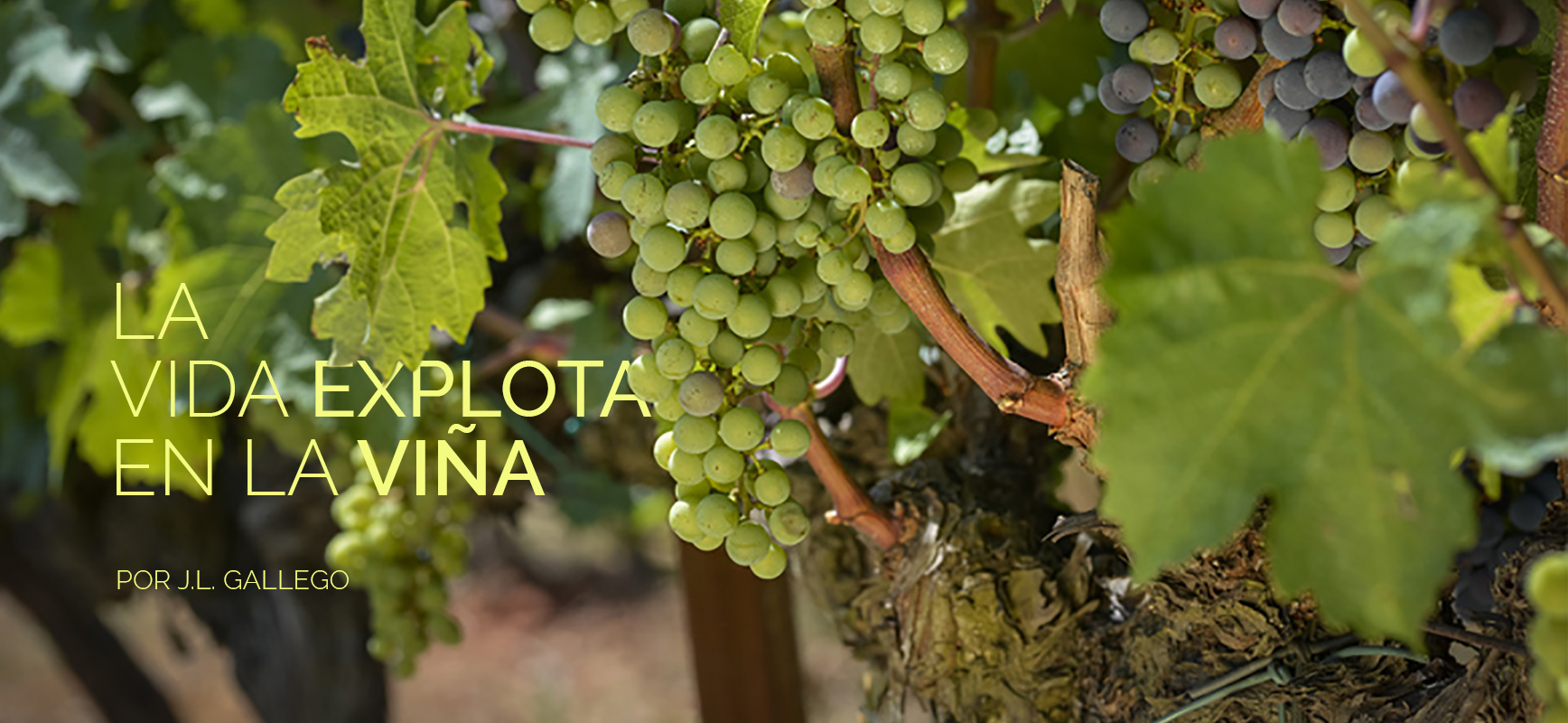The vineyard is brimming with life

Our new section is dedicated to keeping up with the rhythm of the seasons in the countryside and following nature's calendar—what better time to introduce it than now, during one of the year's best months for enjoying the great outdoors. In June the entire countryside is exuberant and constantly revealing something new, a time when one biological event follows the next in rapid succession, barely giving nature lovers a moment's rest.
Most of the crops are standing tall. Trees display their fruit while flowering bushes and shrubs compete in intensity, filling the air with the scent of every imaginable natural fragrance. Going for a stroll and taking note of the aroma of lavender, broom, rosemary and thyme is a true pleasure.
Among the wild birds, the migratory species that arrived just a few weeks ago from their winter grounds in Africa are already watching their broods take flight, in some cases for the third time this year. New generations of swallows and swifts, blue and coal tits, greenfinches, goldfinches and linnets fill the sky. Their trills are so dense and energetic that one barely has time to identify one song before another interrupts it.
This becomes immediately evident when visiting one of the most richly diverse bird habitats: the vineyard.
The vineyard is brimming with life: the vines are at the high point of vegetative growth, leaves cover the wires along the trellis, and vineyard workers are carrying out canopy management tasks to guarantee the best possible crop, which is starting to look bountiful.
With temperatures rising, invertebrates have taken over every inch of the countryside. Almost no spot is devoid of their presence. Flying insects are particularly abundant, the so-called “airborne plankton” comprised of flies, mosquitos, mayflies, flying ants, wasps, moths and many more, which provide swallows and swifts with food. The birds' second broods have already grown to good size in the nests tucked into the eaves and crannies of the farmhouses, and the June skies offer them plenty of nourishment.
I will never tire of pointing out the immense ecological value of insectivorous birds, which serve as one of the most efficient pest-controlling agents in the countryside. Birds are a farmer's greatest ally, which is why it is so important to watch out for their nests, make sure they are comfortable and encourage their presence in and around the vineyard. The greater the number of birds, the fewer the number of flying insect attacks.
In order to highlight the important role of insectivorous birds in viticulture, the Spanish Ornithology Society (SEO/Birdlife) has recently initiated a study in Andalucía (http://www.seo.org/2014/05/30/estudiamos-el-alzacola-rojizo-para-conocer-la-calidad-ambiental-de-los-vinedos-andaluces/) that focuses on the Rufous bush robin, among the rarest bird species in Iberian fauna and one of the most ardent vineyard visitors. The study will examine the potential that vineyards can offer in terms of boosting tourism directed at bird watching (avitourism) as a complement to wine tourism.
A vineyard visit to watch the bee-eaters that nest in the slopes or the kestrels that come to hunt in the open furrows between the vines offers a wonderful experience for nature lovers who, like me, are equally fond of wine.
